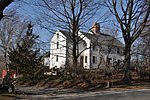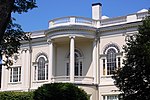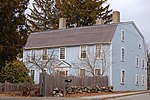Danvers, Massachusetts
Danvers, MassachusettsPopulated places established in 1636Salem witch trialsTowns in Essex County, MassachusettsTowns in Massachusetts ... and 1 more
Use mdy dates from July 2023

Danvers is a town in Essex County, Massachusetts, United States, located on the Danvers River near the northeastern coast of Massachusetts. The suburb is a fairly short ride from Boston and is also in close proximity to the beaches of Gloucester, Ipswich and Revere. Originally known as Salem Village, the town is most widely known for its association with the 1692 Salem witch trials. It was also the site of Danvers State Hospital, one of the state's 19th-century psychiatric hospitals. Danvers is a local center of commerce, hosting many car dealerships and the Liberty Tree Mall. As of the 2020 United States Census, the town's population was 28,087.
Excerpt from the Wikipedia article Danvers, Massachusetts (License: CC BY-SA 3.0, Authors, Images).Danvers, Massachusetts
Coolidge Road, Danvers
Geographical coordinates (GPS) Address Nearby Places Show on map
Geographical coordinates (GPS)
| Latitude | Longitude |
|---|---|
| N 42.575 ° | E -70.930555555556 ° |
Address
Coolidge Road 40
01923 Danvers
Massachusetts, United States
Open on Google Maps











